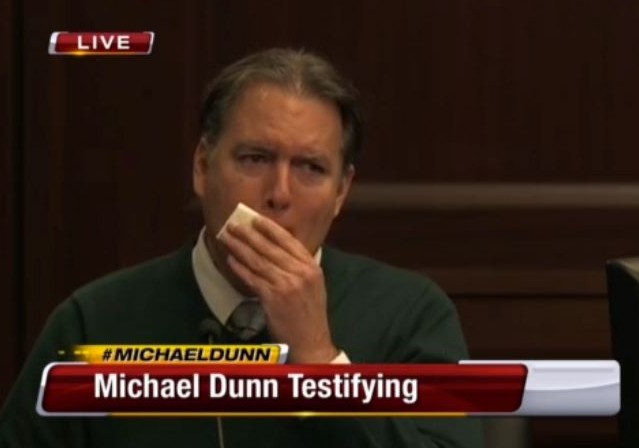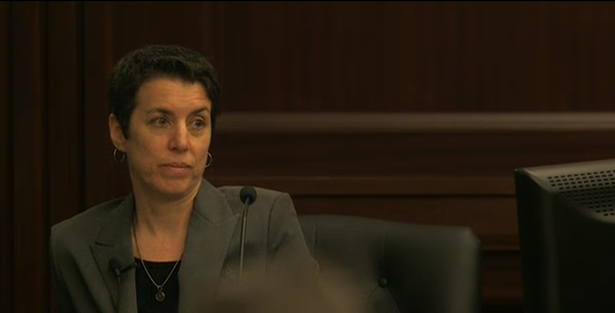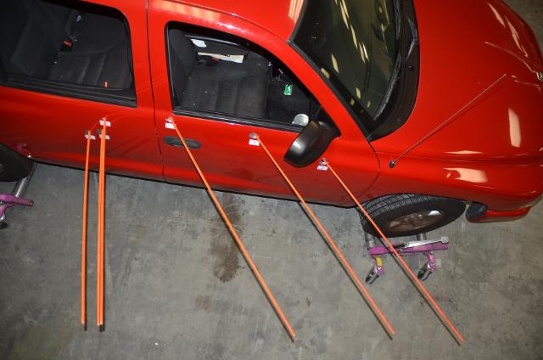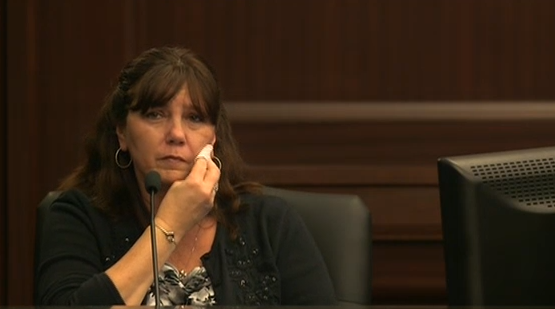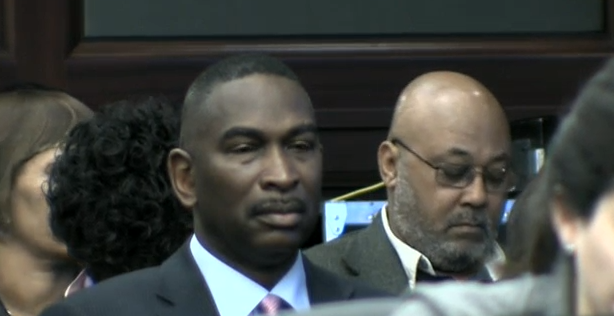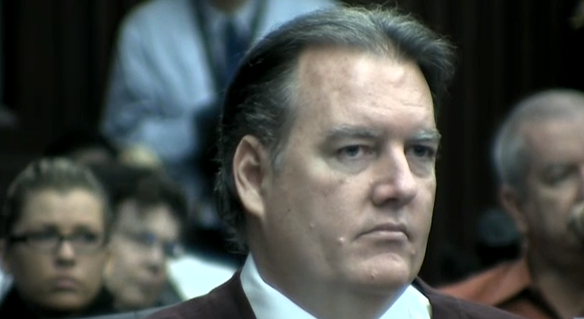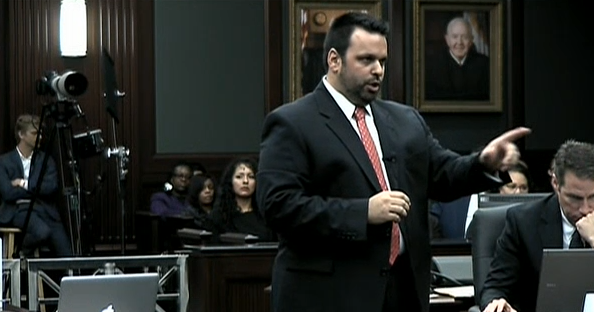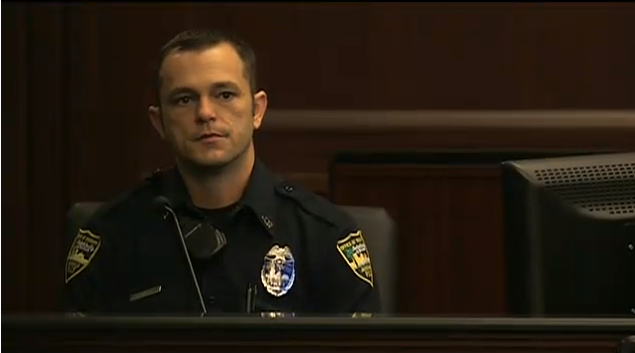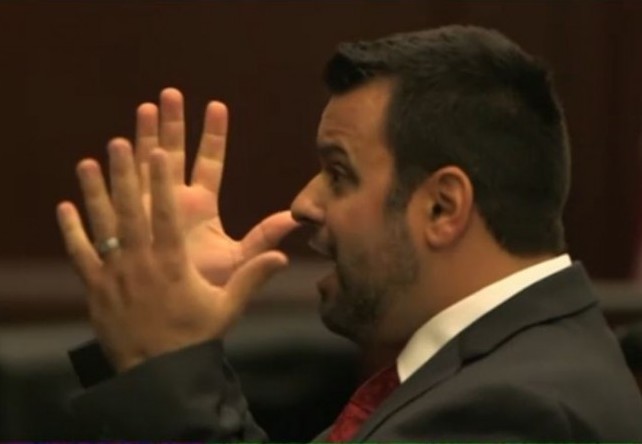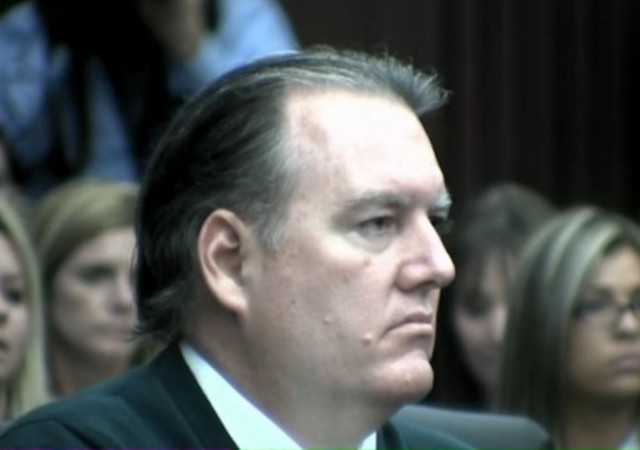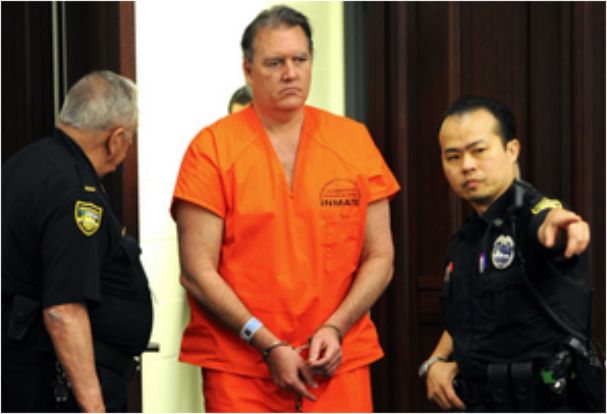Author: Andrew Branca
Andrew Branca
Andrew F. Branca is in his third decade of practicing law in the Commonwealth of Massachusetts. He wrote the first edition of the "Law of Self Defense" in 1997, and is currently in the process of completing the fully revised and updated second edition, which you can preorder now at lawofselfdefense.com. He began his competitive shooting activities as a youth in smallbore rifle, and today is a Life Member of the National Rifle Association (NRA) and a Life Member and Master-class competitor in multiple classifications in the International Defensive Pistol Association (IDPA). Andrew has for many years been an NRA-certified firearms instructor in pistol, rifle, and personal protection, and has previously served as an Adjunct Instructor on the Law of Self Defense at the SigSauer Academy in Epping, NH. He holds or has held concealed carry permits for Massachusetts, Connecticut, Rhode Island, New Hampshire, Maine, Pennsylvania, Florida, Utah, Virginia, and other states.
LIVE COVERAGE: “Loud Music” Murder Trial, Day 5
NOTE: LIVE COVERAGE: “Loud Music” Murder Trial, VERDICT WATCH
---------------- Welcome to day five of our live coverage of the "loud music" 1st degree murder trial of Michael Dunn in real time. Here are a couple live video feeds, with the smaller, upper-most feed proving the most reliable yesterday. Expectations are that this morning will see the last two defense witnesses. One of these is expected to be some kind of expert on stress reactions, but is a bit of a "surprise witness" from the perspective of the State. A hearing will be held at 8AM to discuss whether to allow this testimony, in the form of a Daubert hearing. The second witness, I expect, will be the defendant, Michael Dunn himself. At present there seems insufficient--meaning no--evidence of self-defense necessary for the defense to meet its burden of production on the issue of self-defense. If they fail to meet this burden the jury will not be instructed on self-defense and a conviction is certain. Our end-of-day wrap-up discussing these issues as well as yesterday afternoon's testimony can be found here: “Loud Music” Murder Trial Day 4: Entire Self Defense Narrative At Risk At the bottom of the post is a live Twitter feed with my live tweets and those of others reporting on the trial. We plan to do a brief mid-day summary when the court recesses for lunch, then our usual lengthier coverage/analysis after the court recesses that day's end.“Loud Music” Murder Trial Day 4: Entire Self Defense Narrative At Risk
Evidence so far inadequate even for SD instruction; seems likely Dunn testifies tomorrow...
Mid-Day Wrapup: “Loud Music” Murder Trial, Day Four
Medical Examiner presents graphic testimony, indicates Davis leaning away from fire when struck; State rests...
LIVE COVERAGE: “Loud Music” Murder Trial, Day 4
NOTE: LIVE COVERAGE: “Loud Music” Murder Trial, VERDICT WATCH
---------------- Welcome to day four of our live coverage of the "loud music" 1st degree murder trial of Michael Dunn in real time. Here are a couple live video feeds, with the smaller, upper-most feed proving the most reliable yesterday. Before we get to that, there has been much discussion and some confusion about the number, sequence, and tempo of the gunshots fired by Michael Dunn at the red Durango SUV in which Jordan Davis was followed. Those interested can hear the shots fired on the gas station surveillance tape here: “Loud Music” Murder Trial: Sequence of Gun Shots. At the bottom of the post is a live Twitter feed with my live tweets and those of others reporting on the trial. We plan to do a brief mid-day summary when the court recesses for lunch, then our usual lengthier coverage/analysis after the court recesses that day's end.“Loud Music” Murder Trial Day 3: Dunn’s Fiancé A Tragic Witness
Defense accomplishes little in cross of homicide detective, fiancé, others...
Mid-Day Wrapup: “Loud Music” Murder Trial, Day Three
 (Defense Counsel Cory Strolla and State Attorney Angela Corey.)[/caption]
State Attorney Angela Corey would take the lead on the two evidence technicians, before turning things over to Assistant State Attorney Erin Wolfson for direct of the Deputy.
[caption id="attachment_78073" align="alignnone" width="450"]
(Defense Counsel Cory Strolla and State Attorney Angela Corey.)[/caption]
State Attorney Angela Corey would take the lead on the two evidence technicians, before turning things over to Assistant State Attorney Erin Wolfson for direct of the Deputy.
[caption id="attachment_78073" align="alignnone" width="450"] (State Attorney Angela Corey.)[/caption]
Ron Davis, father of Jordan Davis, was again present in the courtroom.
(State Attorney Angela Corey.)[/caption]
Ron Davis, father of Jordan Davis, was again present in the courtroom.
Detective Andrew Kipple, Lead Crime Scene Technician
[caption id="attachment_78072" align="alignnone" width="450"] (Detective Andrew Kipple.)[/caption]
The first State's witness was Detective Andrew Kipple, the senior evidence technician involved in processing the crime scene and evidence.. His testimony would consume the large majority of the morning.
(Detective Andrew Kipple.)[/caption]
The first State's witness was Detective Andrew Kipple, the senior evidence technician involved in processing the crime scene and evidence.. His testimony would consume the large majority of the morning.
LIVE COVERAGE: “Loud Music” Murder Trial, Day 3
“Loud Music” Murder Trial Day 2: The Durango Survivors Testify
Robert Holmes, Patrol Officer, Jacksonville Sheriff's Office
[caption id="attachment_77961" align="alignnone" width="450"]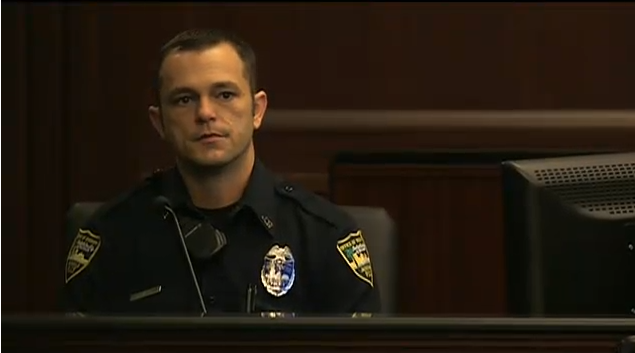 (Patrol Officer Robert Holmes)[/caption]
Assistant State Attorney handled the direct examination of Holmes.
[caption id="attachment_77963" align="alignnone" width="450"]
(Patrol Officer Robert Holmes)[/caption]
Assistant State Attorney handled the direct examination of Holmes.
[caption id="attachment_77963" align="alignnone" width="450"] (Assistant State Attorney Erin Wolfson)[/caption]
Holmes is a 7-year veteran of the police department, with prior Navy service. Perhaps the most remarkable part of his testimony to me was how little first aid training he'd received either as a policeman or seamen. Basically, his training was limited to CPR (last taught to him 7 years prior at the police academy) and how to use a tourniquet. Period.
Holmes described receiving the call of shots fired, arriving at the scene to see Jordan Davis cradled in the arms of his friends. Davis had no pulse. There was no pool of blood (of course, given the deep internal nature of the wound and the fact that Davis' blood pressure would have been zero at that point, there wouldn't be much blood). When Andrew Williams performed CPR compressions, however, Holmes observed blood coming from Davis' back. He described Davis' friends as shocked, as he drove them collectively back to the police station to meet with detectives.
On cross, Strolla asked why Holmes hadn't performed first aid himself, rather than let a "civilian" do it. It was here Holmes explained the paucity of his first aid training, and indicated that he'd thought it best to defer to a civilian who purported to have greater skills.
Strolla also explored the apparent fact that the interviews conducted at the police station by detectives were not recorded, despite the station having adequate capabilities to do so. It seems he intends to argue that this allowed the statements of the Durango survivors to be altered and coordinated over time.
One interesting point on direct arose when Corey asked Holmes where his notebook was from the night of the shooting, and Holmes casually indicated that the notebook was gone, destroyed. This seemed as if it might have some import, but Strolla never touched upon it in cross.
Offline, a Federal law enforcement officer contacted me to share that in his service notebooks were dated and destroyed by fire at pre-determined intervals, to ensure the confidentiality of their contents. Perhaps a similar policy is being followed by the Jacksonville Sheriff's Office.
Holmes came across as professional and objective, as is typical of police officers of any meaningful experience.
(Assistant State Attorney Erin Wolfson)[/caption]
Holmes is a 7-year veteran of the police department, with prior Navy service. Perhaps the most remarkable part of his testimony to me was how little first aid training he'd received either as a policeman or seamen. Basically, his training was limited to CPR (last taught to him 7 years prior at the police academy) and how to use a tourniquet. Period.
Holmes described receiving the call of shots fired, arriving at the scene to see Jordan Davis cradled in the arms of his friends. Davis had no pulse. There was no pool of blood (of course, given the deep internal nature of the wound and the fact that Davis' blood pressure would have been zero at that point, there wouldn't be much blood). When Andrew Williams performed CPR compressions, however, Holmes observed blood coming from Davis' back. He described Davis' friends as shocked, as he drove them collectively back to the police station to meet with detectives.
On cross, Strolla asked why Holmes hadn't performed first aid himself, rather than let a "civilian" do it. It was here Holmes explained the paucity of his first aid training, and indicated that he'd thought it best to defer to a civilian who purported to have greater skills.
Strolla also explored the apparent fact that the interviews conducted at the police station by detectives were not recorded, despite the station having adequate capabilities to do so. It seems he intends to argue that this allowed the statements of the Durango survivors to be altered and coordinated over time.
One interesting point on direct arose when Corey asked Holmes where his notebook was from the night of the shooting, and Holmes casually indicated that the notebook was gone, destroyed. This seemed as if it might have some import, but Strolla never touched upon it in cross.
Offline, a Federal law enforcement officer contacted me to share that in his service notebooks were dated and destroyed by fire at pre-determined intervals, to ensure the confidentiality of their contents. Perhaps a similar policy is being followed by the Jacksonville Sheriff's Office.
Holmes came across as professional and objective, as is typical of police officers of any meaningful experience.
Mid-Day Wrapup: “Loud Music” Murder Trial, Day Two
Robert Holmes, Patrol Officer, Jacksonville Sheriff's Office
[caption id="attachment_77961" align="alignnone" width="450"] (Patrol Officer Robert Holmes)[/caption]
(Patrol Officer Robert Holmes)[/caption]
Assistant State Attorney handled the direct examination of Holmes.
[caption id="attachment_77963" align="alignnone" width="450"] (Assistant State Attorney Erin Wolfson)[/caption]
(Assistant State Attorney Erin Wolfson)[/caption]
William Spicer, Engineer/Paramedic, Jacksonville Fire & Rescue
[caption id="attachment_77964" align="alignnone" width="450"]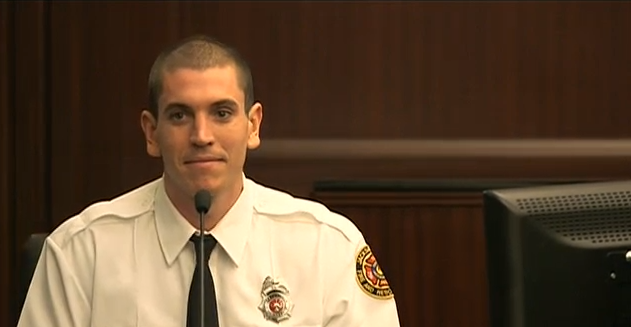 (William Spicer, Paramedic)[/caption]
(William Spicer, Paramedic)[/caption]
LIVE COVERAGE: “Loud Music” Murder Trial, Day Two
“Loud Music” Murder Trial Day 1: Animosity and Provocation Narratives Emerge
Assistant State Attorney John Guy Delivers Opening for Prosecution
Following these introductory remarks, the State's opening was presented by Assistant State Attorney John Guy, and delivered in the emotive style so familiar from his performances during the Zimmerman trial. Alas, he chose to speak in such a soft voice that he was essentially inaudible. The use of headphones, however, makes it possible to hear his remarks. Consistent with the state going for 1st degree murder, and barring that 2nd degree murder, Guy emphasized the several concrete steps Dunn had to take in order to bring fire upon the Durango -- open glove compartment, remove pistol, chamber a round, grip the gun with both hands, fire, fire again, fire again, etc. -- all presumably to set the hook for premeditation and first degree murder. In addition, he emphasized Dunn's angry use of deadly force violence in response to being, as Guy put it, merely disrespected, to set the hook for malice necessary for second degree murder.Attorney Cory Strolla Delivers Opening for the Defense
Defense Attorney Cory Strolla spent roughly twice as much time on his opening remarks, focusing on the three themes beloved by all defense counsel. First, the evidence is weak and contradictory and was collected and evaluated by police and prosecutors in an unprofessional and untrusthworthy manner. Second, if any one of the jurors has not been convinced beyond a reasonable doubt of Dunn's guilt, "stick to your guns" and do not allow yourself to be persuaded by the other jurors -- each of you is bound to make your own decision. And three, if you can hold off coming to a conclusion until we have a chance to present our side of things, you'll see that there are reasonable explanations for our client's conduct on every front.LIVE COVERAGE: “Loud Music” Murder Trial
“Loud Music” Murder Trial Begins: Meet the Jurors
 (Attorney Cory Strolla, speaking to defendant Michael Dunn)[/caption]
The jury selection process was completed yesterday, with 16 jurors empaneled. Although no video or audio was broadcast during voir dire (in sharp contrast to the Zimmerman trial), thanks to the excellent on-location work of journalist Stephanie Brown of WOKV, we enjoy some understand of the jurors' profiles and possible perspectives.
(Attorney Cory Strolla, speaking to defendant Michael Dunn)[/caption]
The jury selection process was completed yesterday, with 16 jurors empaneled. Although no video or audio was broadcast during voir dire (in sharp contrast to the Zimmerman trial), thanks to the excellent on-location work of journalist Stephanie Brown of WOKV, we enjoy some understand of the jurors' profiles and possible perspectives.



“Loud Music” Murder Trial: Jury Selection Completed, Trial To Begin Tomorrow
10 women, 6 men empaneled as jury, trial begins tomorrow at Noonrop...
“Loud Music” Murder Trial: Jury Selection Underway, Media Excluded from Voir Dire
Media fumes over audio-only access to jury voir dire...
“Loud Music” Murder Trial: Who is Judge Russell Healey?
 Michael Dunn on trial on charges of 1st Degree murder for the shooting death of Jordan Davis[/caption]
Michael Dunn on trial on charges of 1st Degree murder for the shooting death of Jordan Davis[/caption]
Presiding Judge Russell Healey Becomes Center of Focus for Media Coverage of Trial
Much of the news about the trial, however, has had little to do with either the State’s case against Dunn or Dunn’s defense against the charges. Instead, rather unusually, much of the last several week’s attention has focused primarily on the Judge overseeing the case, Judge Russell Healey. One might wonder, then, who is Russell Healey in terms of judicial background, experience, and temperament?Appellate Court Orders Emergency Hearing in “Loud Music” Murder Trial
 Michael Dunn interviewed by police following "loud music" shooting of Jordan Davis[/caption]
As we noted in our blog January 8 post on the case:
Michael Dunn interviewed by police following "loud music" shooting of Jordan Davis[/caption]
As we noted in our blog January 8 post on the case:
Donations tax deductible
to the full extent allowed by law.
CONTRIBUTORS
- William A. Jacobson
Founder
- Kemberlee Kaye
Sr. Contrib Editor
- Mary Chastain
Contrib Editor
- Fuzzy Slippers
Weekend Editor
- Mike LaChance
Higher Ed
- Leslie Eastman
Author
- Vijeta Uniyal
Author
- Stacey Matthews
Author
- Jane Coleman
Author
- James Nault
Author
- Mandy Nagy
Editor Emerita
- Learn more about the Contributors

